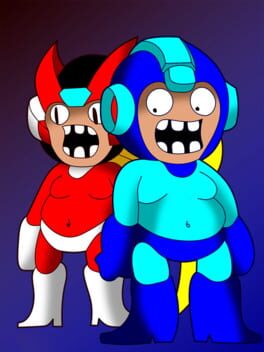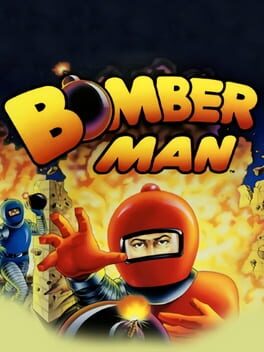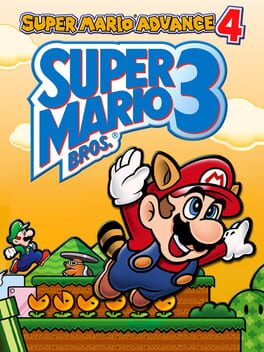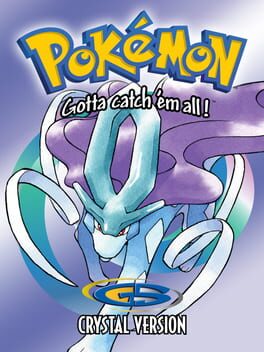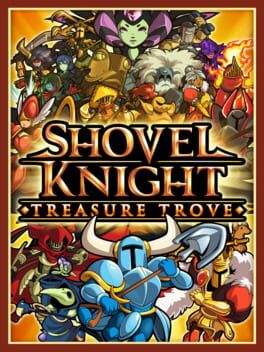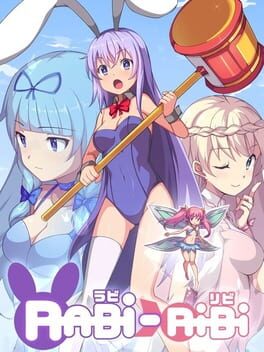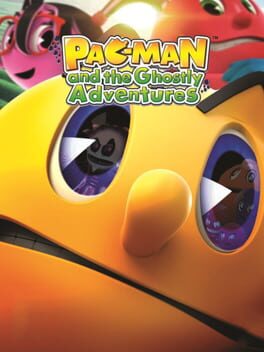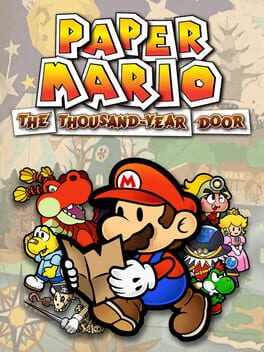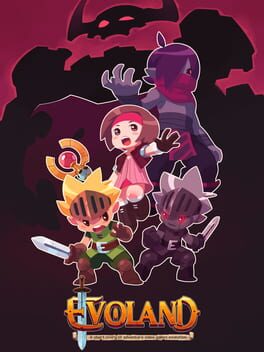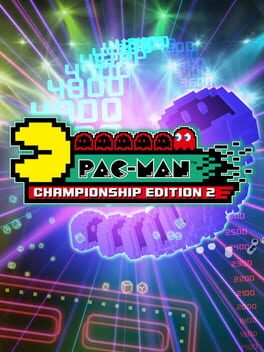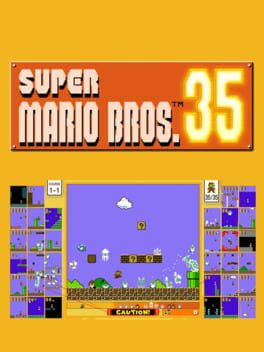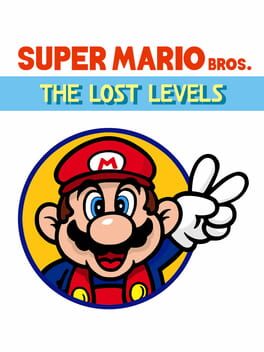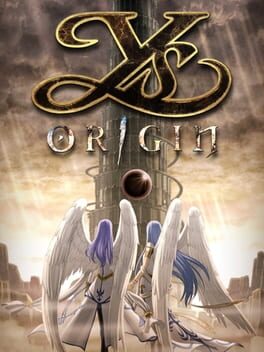mellorine
2012
1990
It's fascinating seeing June Chikuma constantly reinvent her one Bomberman soundtrack over the course of ten years, as she demonstrates a thorough mastery of all sorts of sound chips... usually only on her second go with any given console. Bomberman '93 is generally known as her better soundtrack on the PC Engine as far as I know (it's quite similar to the SFC Super Bomberman 3 soundtrack, I think?), but I like this one a lot. The sound design choices really highlight how the PC Engine's sound chip was the next step forward in Namco's old wavetable-based sound chip - which probably also explains why they re-released so many of their games on this console.
Oh, uh, the game? It's Bomberman. It's basically identical to Bomberman II on NES as far as I can tell. It's not really much to write home about, especially if you're playing single player.
Oh, uh, the game? It's Bomberman. It's basically identical to Bomberman II on NES as far as I can tell. It's not really much to write home about, especially if you're playing single player.
The score primarily reflects World-e and the e-Reader levels.
The main game is just fine; the screen crunch generally actually doesn't affect the game much, since SMB3 was never a particularly vertical game to begin with except for a few levels.
Some quality of life changes might benefit players, like being able to return to previous worlds after beating the game, and how getting a Fire Flower as small Mario instantly makes him Fire Mario. It's largely take-it-or-leave-it features, though, so if you prefer the NES or SNES versions, there's no real reason to play this.
Especially because World-e sucks. If you're playing this version, you're probably playing for the e-Reader levels:
Don't.
There's absolutely zero point to doing so. There's no reward for getting all the e-Coins nor the Advance Coins, nor completing all the levels as both Mario and Luigi. It's probably because the e-Reader was discontinued before all the planned SMA4 cards could be released, even in Japan - there undoubtedly were plans to release more levels, which might have had included rewards for 100% completion?
But that wouldn't matter if the levels were fun, which... they're more miss than hit.
A key problem with World-e in general is that Luigi behaves completely differently to how he does in the main game; he's a lot floatier, more slippery and slightly slower, like an exaggerated version of how he should feel.
This surprisingly does not work well with the level design as a whole; there are levels where Luigi's movement feels just unaccounted for, like It's a Shoe-In, Caped Escape, No Time to Dawdle and Castle Dash. Controlling Luigi in general does not feel good or precise enough, and I can't recommend playing as him at all.
Another big issue is something inherited from the base Super Mario Bros. 3, actually: there are no checkpoints in any level whatsoever.
This gets extremely tricky and tedious, since World-e levels are generally far longer and sometimes more difficult than the base game levels, especially if you're going for the Advance Coins. Dying with 4/5, even all 5 Advance Coins collected in a stage and having to retry it to get them all again without dying again is agonizing, especially in auto-scrolling levels; I eventually resorted to save states, which I hope the Wii U version includes as well.
It's just such a weird decision when World-e imports various other features from the other Super Mario Advance games. Would adding the checkpoints from Super Mario World really have been too much?
The level design feels... inconsistent, almost like Mario Maker levels of quality. There's some really interesting ideas explored sometimes... then there's some that are too easily undermined, or some that's simply not balanced for completion with zero checkpoints. Maybe it's worth a look if you're looking for different takes on Mario level mechanics, but... expect inconsistent quality.
I wish this could have been done with Super Mario Advance 2 instead, honestly. Mario's movement is much more precise in SMW in general, and introducing SMB3's plethora of power-ups in that game might have been more interesting than just throwing in the Cape Feather into this game. Checkpoints would be a much welcome addition, and since you collect Dragon Coins in the main levels anyway, it wouldn't have been as much of a change of pace to collect Advance Coins in these levels, compared to the contrast in pacing between the SMB3 and World-e portions of Super Mario Advance 4.
Oh, and less autoscrolling airships. That would have been nice.
Sadly, Nintendo does not like making good business decisions.
The main game is just fine; the screen crunch generally actually doesn't affect the game much, since SMB3 was never a particularly vertical game to begin with except for a few levels.
Some quality of life changes might benefit players, like being able to return to previous worlds after beating the game, and how getting a Fire Flower as small Mario instantly makes him Fire Mario. It's largely take-it-or-leave-it features, though, so if you prefer the NES or SNES versions, there's no real reason to play this.
Especially because World-e sucks. If you're playing this version, you're probably playing for the e-Reader levels:
Don't.
There's absolutely zero point to doing so. There's no reward for getting all the e-Coins nor the Advance Coins, nor completing all the levels as both Mario and Luigi. It's probably because the e-Reader was discontinued before all the planned SMA4 cards could be released, even in Japan - there undoubtedly were plans to release more levels, which might have had included rewards for 100% completion?
But that wouldn't matter if the levels were fun, which... they're more miss than hit.
A key problem with World-e in general is that Luigi behaves completely differently to how he does in the main game; he's a lot floatier, more slippery and slightly slower, like an exaggerated version of how he should feel.
This surprisingly does not work well with the level design as a whole; there are levels where Luigi's movement feels just unaccounted for, like It's a Shoe-In, Caped Escape, No Time to Dawdle and Castle Dash. Controlling Luigi in general does not feel good or precise enough, and I can't recommend playing as him at all.
Another big issue is something inherited from the base Super Mario Bros. 3, actually: there are no checkpoints in any level whatsoever.
This gets extremely tricky and tedious, since World-e levels are generally far longer and sometimes more difficult than the base game levels, especially if you're going for the Advance Coins. Dying with 4/5, even all 5 Advance Coins collected in a stage and having to retry it to get them all again without dying again is agonizing, especially in auto-scrolling levels; I eventually resorted to save states, which I hope the Wii U version includes as well.
It's just such a weird decision when World-e imports various other features from the other Super Mario Advance games. Would adding the checkpoints from Super Mario World really have been too much?
The level design feels... inconsistent, almost like Mario Maker levels of quality. There's some really interesting ideas explored sometimes... then there's some that are too easily undermined, or some that's simply not balanced for completion with zero checkpoints. Maybe it's worth a look if you're looking for different takes on Mario level mechanics, but... expect inconsistent quality.
I wish this could have been done with Super Mario Advance 2 instead, honestly. Mario's movement is much more precise in SMW in general, and introducing SMB3's plethora of power-ups in that game might have been more interesting than just throwing in the Cape Feather into this game. Checkpoints would be a much welcome addition, and since you collect Dragon Coins in the main levels anyway, it wouldn't have been as much of a change of pace to collect Advance Coins in these levels, compared to the contrast in pacing between the SMB3 and World-e portions of Super Mario Advance 4.
Oh, and less autoscrolling airships. That would have been nice.
Sadly, Nintendo does not like making good business decisions.
This review contains spoilers
Wow. Where do I even begin with this game?
I'll just put a disclaimer: my experience with video games generally center around platformers, arcade and casual games - stuff that don't really focus on narrative too much for the sake of letting the player's experience be their own story to some extent.
Final Fantasy X was something of a culture shock, in both how different it was from the Final Fantasy games I'd played before it (I, IV, Chrono Trigger) and how different it was from video games as I'm comfortable with the medium as a whole.
This is perhaps the first game I've ever played that actually felt like a genuine story of characters that's not compromised one way or another to its gameplay... generally for the better.
Seeing the main cast grow and mature past both their former selves, as well as their once-assumed destinies was intense, as was comparing them to the rest of Spira, against its antagonists and the themes of corruption, ignorance, false hope and tradition that arise from that.
Seymour in particular was interesting from that cast of antagonists in how close he was to being sympathizable, how close he was to recognizing the things that Yuna did... yet without the support she had, without love for others, he was blinded by ambition, wrongly assuming the only way to love was to kill.
I love to hate him. The contrast between him and Yuna acts as a reminder to myself in some ways.
Breaking from destiny, choosing one's own path... The Sphere Grid does a good job in translating that thematic idea into gameplay, and I really like it and how much strategy you can put into it and the weapon customization in the endgame, but I do think I'd like to see that implemented in a game less narratively driven, a bit more roguelike, one with... decidedly less cutscenes. I very much enjoyed learning the bosses' strategies and eventually outsmarting them through exploiting all kinds of mechanics, but certain pre-boss cutscenes lose far too much of their power when you watch them for the third time after getting defeated against the boss right near the end.
Still, I think I think the game works very well in the sum of its parts. By the time I was done, I'd grown to love the Al Bhed and what they stood for, I was happy with where my party had gone, both as fighters and as people, and I hope Spira will move on to be a better place in X-2 now that Yevon and its religion have been proven to be a sham; that they will learn to be less judgmental of one another and truly strive for peace.
Final Fantasy X was amazing, and it was a one-of-a-kind experience in my relationship with video games so far. I wish I could embrace everything about it, even down to its more frustrating parts in game design, but it's hard for me to say it's one of the best games I've played alongside my all-time favorites, if only because this isn't the kind of experience I'm used to from video games, and some of that inexperience has let me down in my own personal time with the game.
One day I'll have another sixty hours to invest in this game with better hindsight. I think I'd be ready to absolutely love it then.
I'll just put a disclaimer: my experience with video games generally center around platformers, arcade and casual games - stuff that don't really focus on narrative too much for the sake of letting the player's experience be their own story to some extent.
Final Fantasy X was something of a culture shock, in both how different it was from the Final Fantasy games I'd played before it (I, IV, Chrono Trigger) and how different it was from video games as I'm comfortable with the medium as a whole.
This is perhaps the first game I've ever played that actually felt like a genuine story of characters that's not compromised one way or another to its gameplay... generally for the better.
Seeing the main cast grow and mature past both their former selves, as well as their once-assumed destinies was intense, as was comparing them to the rest of Spira, against its antagonists and the themes of corruption, ignorance, false hope and tradition that arise from that.
Seymour in particular was interesting from that cast of antagonists in how close he was to being sympathizable, how close he was to recognizing the things that Yuna did... yet without the support she had, without love for others, he was blinded by ambition, wrongly assuming the only way to love was to kill.
I love to hate him. The contrast between him and Yuna acts as a reminder to myself in some ways.
Breaking from destiny, choosing one's own path... The Sphere Grid does a good job in translating that thematic idea into gameplay, and I really like it and how much strategy you can put into it and the weapon customization in the endgame, but I do think I'd like to see that implemented in a game less narratively driven, a bit more roguelike, one with... decidedly less cutscenes. I very much enjoyed learning the bosses' strategies and eventually outsmarting them through exploiting all kinds of mechanics, but certain pre-boss cutscenes lose far too much of their power when you watch them for the third time after getting defeated against the boss right near the end.
Still, I think I think the game works very well in the sum of its parts. By the time I was done, I'd grown to love the Al Bhed and what they stood for, I was happy with where my party had gone, both as fighters and as people, and I hope Spira will move on to be a better place in X-2 now that Yevon and its religion have been proven to be a sham; that they will learn to be less judgmental of one another and truly strive for peace.
Final Fantasy X was amazing, and it was a one-of-a-kind experience in my relationship with video games so far. I wish I could embrace everything about it, even down to its more frustrating parts in game design, but it's hard for me to say it's one of the best games I've played alongside my all-time favorites, if only because this isn't the kind of experience I'm used to from video games, and some of that inexperience has let me down in my own personal time with the game.
One day I'll have another sixty hours to invest in this game with better hindsight. I think I'd be ready to absolutely love it then.
Although Platinum was my first proper Pokémon game, Generation 2 was the first one I played as a kid, being introduced to it alongside a copy of the TCB Dual emulator on a CD I must have received from some older kid around where I lived.
Platinum was definitely influential for me in its own ways, but you can argue it's through emulation - this game and all the others on the CD - that I gradually learned about basic tech savviness, got into chiptune and retro video game music, and ultimately became the person I am today in what I do, what I play, and what I listen to.
You might notice that I didn't really talk about the game itself in these first two paragraphs.
I, uh... I went through the first seven gyms, got stuck in the Ice Cave, and never reached Blackthorn City.
It's for that reason that I'm happy to be finally done with Pokémon Crystal after all these long years, but doing so was admittedly a bittersweet experience. I've always considered this one of the better Pokémon generations (not really having played the games past the DS), but its problems are laid bare in stark contrast to future generations.
The easiest example? The difficulty. There's a few reasons I think Generation 2 suffers really heavily compared to the other games. The level curve is something people always mention about this game - how much of Johto between Ecruteak, Mahogany, Olivine and Cianwood hover around the level 20-29 mark, how there isn't much that prepares players for Blue's mid-50s team in Kanto, and how there's absolutely nothing that prepares them against Red.
Lots of other people have gone in a lot of detail about these, but I have a slightly different problem I wanted to address.
Let's explain it with an anecdote: I used a Magneton for my team somewhat out of impulse because I happened to encounter Magnemite on the way to Olivine. On paper, this is a decent idea. Mareep is inaccessible in Crystal; Pikachu and Electabuzz are only available in Kanto; the Thunderstone needed to evolve Eevee into a Jolteon can only be found in Kanto or through receiving calls from an extremely specific NPC; all of which leaves your options for an Electric-type in Johto to Magnemite or Chinchou, the latter of which can't be found unless you fished.
Do you see a problem here? How about if I told you that between Magneton and Lanturn, neither of them learn Thunder or Thunderbolt by level-up, and need to be taught them by buying those moves through Game Corner coins, just like how other Pokémon like Chansey, Tauros and even Gyarados(????) would have to?
Generation 2 has a problem.
Generation 2 has a problem, and it's that I think it's sandwiched between the far more interesting Generations 1 and 3, and - especially with the remakes - doesn't have anything cool to its name anymore other than its aesthetic.
Beneath the surface, Generation 1 has a decent amount of themes and topics, such as Pokémon cloning, genetics and mortality, that lie in the forefront of its narrative. It's definitely even rougher than Generation 2 in terms of its intended gameplay... but it's a lot more immediately exploitable for those willing to put in half an hour into learning some of the most convenient, fun and fascinating glitches that in my opinion only add to the atmosphere that Generation 1 uniquely possesses.
Generation 3 on the other hand improves on the storytelling that Generation 2 tries to introduce to the series (Generation 1 was really only held together with a plot and no story, let's face it), with a compelling main conflict, clearly defined plot curve with its antagonistic team(s), and with a clearly, explicitly defined theme of harmony between human activity, Pokémon and nature.
In terms of its gameplay, Generation 3 is also much more compelling with the addition of abilities, a far more sensible level curve, and a genuinely compelling overworld to explore.
So what does Johto have left to its name? A traditional Japanese theming to it? Emphasis on folklore and legend?
I'm... honestly really not sure. I really like parts of what the prototypes were going for, between Pokémon like Twins that was meant to be a Girafarig pre-evolution before being retooled into Wobbuffet, or Norowara, being the signature move holder of Curse... but I don't know if that iteration of a Generation 2 would have ended up particularly amazing either, especially since it was even worse about game balance from what we know.
I think it's a testament to how solid Pokémon's core formula is that even a game with such questionable design choices as I've mentioned can go on to become such a memorable, beloved entry in a franchise, helped by arguably being the first time Pokémon found an extremely strong aesthetic (artistic and musical) direction within the games. At the end of the day, I really liked playing through this game again.
I know I can thank this trio of games for two things, though:
1) Wow, what a soundtrack, am I right? It's a departure from Junichi Masuda's almost neoclassical Generation 1 soundtrack to be sure, but I think it was a necessary one to ensure Pokémon's musical success moving forward.
2) precious water rabbit friend azumarill best pokemon
Final team: Sandslash / Magneton / Typhlosion / Azumarill / Jumpluff / Shiny Crobat!
It was surprisingly exciting defeating Red with such a team.
Save file playtime: 37:51
Irl playtime: 13:04
Platinum was definitely influential for me in its own ways, but you can argue it's through emulation - this game and all the others on the CD - that I gradually learned about basic tech savviness, got into chiptune and retro video game music, and ultimately became the person I am today in what I do, what I play, and what I listen to.
You might notice that I didn't really talk about the game itself in these first two paragraphs.
I, uh... I went through the first seven gyms, got stuck in the Ice Cave, and never reached Blackthorn City.
It's for that reason that I'm happy to be finally done with Pokémon Crystal after all these long years, but doing so was admittedly a bittersweet experience. I've always considered this one of the better Pokémon generations (not really having played the games past the DS), but its problems are laid bare in stark contrast to future generations.
The easiest example? The difficulty. There's a few reasons I think Generation 2 suffers really heavily compared to the other games. The level curve is something people always mention about this game - how much of Johto between Ecruteak, Mahogany, Olivine and Cianwood hover around the level 20-29 mark, how there isn't much that prepares players for Blue's mid-50s team in Kanto, and how there's absolutely nothing that prepares them against Red.
Lots of other people have gone in a lot of detail about these, but I have a slightly different problem I wanted to address.
Let's explain it with an anecdote: I used a Magneton for my team somewhat out of impulse because I happened to encounter Magnemite on the way to Olivine. On paper, this is a decent idea. Mareep is inaccessible in Crystal; Pikachu and Electabuzz are only available in Kanto; the Thunderstone needed to evolve Eevee into a Jolteon can only be found in Kanto or through receiving calls from an extremely specific NPC; all of which leaves your options for an Electric-type in Johto to Magnemite or Chinchou, the latter of which can't be found unless you fished.
Do you see a problem here? How about if I told you that between Magneton and Lanturn, neither of them learn Thunder or Thunderbolt by level-up, and need to be taught them by buying those moves through Game Corner coins, just like how other Pokémon like Chansey, Tauros and even Gyarados(????) would have to?
Generation 2 has a problem.
Generation 2 has a problem, and it's that I think it's sandwiched between the far more interesting Generations 1 and 3, and - especially with the remakes - doesn't have anything cool to its name anymore other than its aesthetic.
Beneath the surface, Generation 1 has a decent amount of themes and topics, such as Pokémon cloning, genetics and mortality, that lie in the forefront of its narrative. It's definitely even rougher than Generation 2 in terms of its intended gameplay... but it's a lot more immediately exploitable for those willing to put in half an hour into learning some of the most convenient, fun and fascinating glitches that in my opinion only add to the atmosphere that Generation 1 uniquely possesses.
Generation 3 on the other hand improves on the storytelling that Generation 2 tries to introduce to the series (Generation 1 was really only held together with a plot and no story, let's face it), with a compelling main conflict, clearly defined plot curve with its antagonistic team(s), and with a clearly, explicitly defined theme of harmony between human activity, Pokémon and nature.
In terms of its gameplay, Generation 3 is also much more compelling with the addition of abilities, a far more sensible level curve, and a genuinely compelling overworld to explore.
So what does Johto have left to its name? A traditional Japanese theming to it? Emphasis on folklore and legend?
I'm... honestly really not sure. I really like parts of what the prototypes were going for, between Pokémon like Twins that was meant to be a Girafarig pre-evolution before being retooled into Wobbuffet, or Norowara, being the signature move holder of Curse... but I don't know if that iteration of a Generation 2 would have ended up particularly amazing either, especially since it was even worse about game balance from what we know.
I think it's a testament to how solid Pokémon's core formula is that even a game with such questionable design choices as I've mentioned can go on to become such a memorable, beloved entry in a franchise, helped by arguably being the first time Pokémon found an extremely strong aesthetic (artistic and musical) direction within the games. At the end of the day, I really liked playing through this game again.
I know I can thank this trio of games for two things, though:
1) Wow, what a soundtrack, am I right? It's a departure from Junichi Masuda's almost neoclassical Generation 1 soundtrack to be sure, but I think it was a necessary one to ensure Pokémon's musical success moving forward.
2) precious water rabbit friend azumarill best pokemon
Final team: Sandslash / Magneton / Typhlosion / Azumarill / Jumpluff / Shiny Crobat!
It was surprisingly exciting defeating Red with such a team.
Save file playtime: 37:51
Irl playtime: 13:04
It's been said that Nintendo approaches Mario games with a typical structure found in yonkoma (four-panel manga): exposition, development, subversion and recapitulation.
Of course, it's not just a Nintendo thing - Capcom does it with Mega Man as well, and it's no surprise that Yacht Club drew from it heavily in the Shovel Knight games.
What's more interesting to me is that the four games ended up feeling somewhat like that, in of themselves.
Shovel of Hope sets the stage and context for everything else that's done with its basic framework; Plague of Shadows, like a typical panel 2, probably doesn't work as well without the context before it.
Specter of Torment is like a panel 3 with a particularly funny reaction face or line, often enjoyed on its own merits, but losing some of that original context in the process.
King of Cards isn't fully appreciable without considering everything before it, but I'm all the more glad that it exists - in some ways it feels natural and bookends-ish.
I like yonkoma a lot. I like Shovel Knight a lot too.
Just... ignore Showdown.
Of course, it's not just a Nintendo thing - Capcom does it with Mega Man as well, and it's no surprise that Yacht Club drew from it heavily in the Shovel Knight games.
What's more interesting to me is that the four games ended up feeling somewhat like that, in of themselves.
Shovel of Hope sets the stage and context for everything else that's done with its basic framework; Plague of Shadows, like a typical panel 2, probably doesn't work as well without the context before it.
Specter of Torment is like a panel 3 with a particularly funny reaction face or line, often enjoyed on its own merits, but losing some of that original context in the process.
King of Cards isn't fully appreciable without considering everything before it, but I'm all the more glad that it exists - in some ways it feels natural and bookends-ish.
I like yonkoma a lot. I like Shovel Knight a lot too.
Just... ignore Showdown.
2016
I dunno, I just don't get it.
Does having an interesting combat system in theory mean that a game has interesting gameplay? Pokémon has an extremely fascinating combat system, but it makes awful use of it.
Does having some undeniably charming moments mean that a game has good story? Lots of games have those things, but fall flat on their storytelling.
Does being visually interesting mean that a virtual world feels lived in? Heh, just look at Hover.
I think Paper Mario 1 worked with its basic locales because they played to the strengths of what the franchise had already established. Goombas and Koopas having peaceful establishments was an interesting twist, it makes sense that a series focused around Stars (Star World, Power Stars, Starmen, Star Road... all that before Super Mario Galaxy) would have Star Spirits as deities, Bowser's immature personality implied through Super Mario Bros. 3 and Super Mario 64 was elaborated upon, making him a really likeable villain...
Thousand-Year Door throws that all out of the window in a certain overconfidence that its own storytelling is going to stand just as strong, but it just... doesn't land right?
I won't pretend I didn't like Vivian, but "I like this one character" is not a real reason for GOTY (game of thousand years) status.
Does having an interesting combat system in theory mean that a game has interesting gameplay? Pokémon has an extremely fascinating combat system, but it makes awful use of it.
Does having some undeniably charming moments mean that a game has good story? Lots of games have those things, but fall flat on their storytelling.
Does being visually interesting mean that a virtual world feels lived in? Heh, just look at Hover.
I think Paper Mario 1 worked with its basic locales because they played to the strengths of what the franchise had already established. Goombas and Koopas having peaceful establishments was an interesting twist, it makes sense that a series focused around Stars (Star World, Power Stars, Starmen, Star Road... all that before Super Mario Galaxy) would have Star Spirits as deities, Bowser's immature personality implied through Super Mario Bros. 3 and Super Mario 64 was elaborated upon, making him a really likeable villain...
Thousand-Year Door throws that all out of the window in a certain overconfidence that its own storytelling is going to stand just as strong, but it just... doesn't land right?
I won't pretend I didn't like Vivian, but "I like this one character" is not a real reason for GOTY (game of thousand years) status.
2013
1994
I don't know how on earth a game about as mechanically complex as the first Final Fantasy was such a ride.
The only phrase I think I have to describe it is Je ne sais quoi.
There's something Itoi does that just feels so... different, even now with Undertale and all the games that take after Earthbound. It has a personality of its own, from start to horrifying finish.
The only phrase I think I have to describe it is Je ne sais quoi.
There's something Itoi does that just feels so... different, even now with Undertale and all the games that take after Earthbound. It has a personality of its own, from start to horrifying finish.
I've played them all. Championship Edition, DX, Pac-Mania, Arrangement, even Super Pac-Man and Pac & Pal.
This one is my favorite one. No, I'm not kidding! Please hear me out.
I think the Championship Edition games as a whole are some of the best that Pac-Man has to offer: great flashy visuals and music along to a speedy reinterpretation on the classic Pac-Man formula based around scoring as high as you can within a fixed amount of time.
The original Championship Edition was great; you can tell it was Toru Iwatani himself behind the design of the game from start to finish. Ghosts are genuinely threatening, and their positioning based on your movement is key to keeping a combo going and ultimately scoring high...
But it's a little basic when you look at the games that came after.
I think the nomenclature behind DX was a massive mistake. Too many people assume that this was the same game as the original that Toru Iwatani worked on, just slightly enhanced-- but that's not my point here.
DX is flashier, with more customizable options, more mazes with genuinely interesting designs, and more options like Ghost Train and Time Trials, as well as a practice mode and visualizations of your game speed...
But it's a lot more superficial. Ghost Trains end up making the AI much less interesting, and the slowdown and bombs end up affecting the game's pace too much that it becomes a nearly braindead experience. After all, what danger are you ever truly in when you get five whole seconds to decide whether to use a bomb in the face of a ghost or not?
Both of them have some very interesting concepts that I think were underutilized - and that's where Championship Edition 2 comes in.
Firstly, the dots. The reason why you don't need to eat every dot in order to progress is to increase how much more open the game's sense of pathing can be. Routes are now less about just following the most optimal paths through the dot trails, but more about figuring out the fastest way to the fruit while also spawning it. Score and game speed increases considerably the further you get into the maps; your goal is always to get to a 500 dot combo, then to eat the fruit as soon as possible.
I'm a little mixed about the bombs, but I think they're good overall. The points you accumulate from getting the early maps' bombs don't stack up to the sheer score you can rack up from later maps' ghost trains and fruit, so there's no real point to going out of your way to hoard them. The fact that they give you score might make players hesitant to use them, but it's always a tradeoff of whether using one might let you catch a blue ghost train faster, thus leading to more scoring time.
I think it's much better than in DX, honestly. It doesn't drop the pace of the game (which feels like a running theme with 2 vs DX), doesn't immediately punish you for using it but focuses more on risk vs reward, and most importantly - transforms what was originally a solely reactionary tool into a potentially proactive one.
I think the power dynamics between Pac-Man and the ghosts is made more equal by giving Pac-Man a brake (especially important in extreme!), removing one-touch kills and the bomb having more utility than ever - besides, angry ghosts can't go in to hurt you in the pocket where the fruit spawns, so you can camp there to calm the ghosts down... except they go in to kill you if you stay there for 30 seconds, at which point I'd argue that's not exactly how the game intended itself to be played anyway.
Finally, I like that the game is a lot more transparent than DX. Ghost patterns are clearer and more predictable if you put time into it; the fact that the ghost trains are all contained into the ghost box at the end of every power pellet maze effectively resets the ghost patterns every now and then, and even the blue ghost and fruit bubble behavior are predictable and possible to manipulate and intercept - even if the fruit moreso than the ghosts.
Pac-Man Championship Edition 2 might be the most lab-able, the most solvable game in the series after the original, and I think that's a good thing. Its strategic elements are laid considerably more bare than any game after the original (yes, even more than the original CE), and if you take time to understand its mechanics and make the most out of them, I think CE2 proves itself to be a deep game that's more fun to master than the misnamed, flashy but superficial CEDX, and the slower, harder and more methodical almost-to-a-fault Championship Edition.
This one is my favorite one. No, I'm not kidding! Please hear me out.
I think the Championship Edition games as a whole are some of the best that Pac-Man has to offer: great flashy visuals and music along to a speedy reinterpretation on the classic Pac-Man formula based around scoring as high as you can within a fixed amount of time.
The original Championship Edition was great; you can tell it was Toru Iwatani himself behind the design of the game from start to finish. Ghosts are genuinely threatening, and their positioning based on your movement is key to keeping a combo going and ultimately scoring high...
But it's a little basic when you look at the games that came after.
I think the nomenclature behind DX was a massive mistake. Too many people assume that this was the same game as the original that Toru Iwatani worked on, just slightly enhanced-- but that's not my point here.
DX is flashier, with more customizable options, more mazes with genuinely interesting designs, and more options like Ghost Train and Time Trials, as well as a practice mode and visualizations of your game speed...
But it's a lot more superficial. Ghost Trains end up making the AI much less interesting, and the slowdown and bombs end up affecting the game's pace too much that it becomes a nearly braindead experience. After all, what danger are you ever truly in when you get five whole seconds to decide whether to use a bomb in the face of a ghost or not?
Both of them have some very interesting concepts that I think were underutilized - and that's where Championship Edition 2 comes in.
Firstly, the dots. The reason why you don't need to eat every dot in order to progress is to increase how much more open the game's sense of pathing can be. Routes are now less about just following the most optimal paths through the dot trails, but more about figuring out the fastest way to the fruit while also spawning it. Score and game speed increases considerably the further you get into the maps; your goal is always to get to a 500 dot combo, then to eat the fruit as soon as possible.
I'm a little mixed about the bombs, but I think they're good overall. The points you accumulate from getting the early maps' bombs don't stack up to the sheer score you can rack up from later maps' ghost trains and fruit, so there's no real point to going out of your way to hoard them. The fact that they give you score might make players hesitant to use them, but it's always a tradeoff of whether using one might let you catch a blue ghost train faster, thus leading to more scoring time.
I think it's much better than in DX, honestly. It doesn't drop the pace of the game (which feels like a running theme with 2 vs DX), doesn't immediately punish you for using it but focuses more on risk vs reward, and most importantly - transforms what was originally a solely reactionary tool into a potentially proactive one.
I think the power dynamics between Pac-Man and the ghosts is made more equal by giving Pac-Man a brake (especially important in extreme!), removing one-touch kills and the bomb having more utility than ever - besides, angry ghosts can't go in to hurt you in the pocket where the fruit spawns, so you can camp there to calm the ghosts down... except they go in to kill you if you stay there for 30 seconds, at which point I'd argue that's not exactly how the game intended itself to be played anyway.
Finally, I like that the game is a lot more transparent than DX. Ghost patterns are clearer and more predictable if you put time into it; the fact that the ghost trains are all contained into the ghost box at the end of every power pellet maze effectively resets the ghost patterns every now and then, and even the blue ghost and fruit bubble behavior are predictable and possible to manipulate and intercept - even if the fruit moreso than the ghosts.
Pac-Man Championship Edition 2 might be the most lab-able, the most solvable game in the series after the original, and I think that's a good thing. Its strategic elements are laid considerably more bare than any game after the original (yes, even more than the original CE), and if you take time to understand its mechanics and make the most out of them, I think CE2 proves itself to be a deep game that's more fun to master than the misnamed, flashy but superficial CEDX, and the slower, harder and more methodical almost-to-a-fault Championship Edition.
2020
2006
Over the past few months, the Ys series has found itself quickly moving up the ranks of my favorite video game series. Considering how much I feel nostalgia plays a role in my preferences and biases, the fact that this series of games have been so increasingly on my mind is remarkable - even moreso when you consider that before Ys Origin, I had played Ys VIII, which has become one of my favorite games, but... also Ys I through III, which can only really be described as "aged quite poorly".
I'm not honestly sure why I chose to start with the series with the first two games. Even though I admire them far more than the likes of Dragon Quest and Hydlide, they still have their shortcomings. There's much I could write about the two games, but this is a Ys Origins writeup, isn't it?
I think the most relevant point to address is that for the story that the entire series is named after, Ys I and II have fairly underwhelming, rudimentary storytelling that completely undermines its significance. Foreshadowing the two retellings that would come after (Oath at Felghana and Memories of Celceta), Falcom decided to expand on the story and scope of Ys by...
Making a prequel? I'm honestly very torn as to how I feel about it. On one hand, I really would have liked to see the original duo of games fully reimagined like the two aforementioned retellings, with their story expanded, taking into account what came after, bridging some things and setting up others, and... I won't lie, I would have liked to see Adol get more time with Reah, Feena and Lilia.
On the other hand, I can't really complain about what they did end up doing! The expanded story of the land of Ys really helps contextualize basically every single thing that happened in the first two games (it doesn't hurt that Origin is drenched in tribute and homage to them), and having protagonists who actually talk leads to a lot of room for charming character development that resolves (...in each of their playthroughs, at least) their own self-contained story arcs, told and completed through the course of one game.
It's something that the numbered Ys games understandably shy away from, because Adol's story arc is deliberately unfinished, and considering the premise that we've only seen nine out of what might be a hundred of his travelogues so far, I assume Falcom would be hesitant about this kind of active character-based storytelling for him. Still, it's a refreshing change of pace! I was engaged by every second of Ys Origin's storytelling, enough to go through three whole trips of the tower.
Right. The tower. The location that the entirety of the game is set in, the one that you can't leave as any character at any circumstance. I think this design affects Ys Origin heavily, influencing every part of its design and progression.
I've honestly found myself questioning at times whether the Ys series count as RPGs, given their heavy differences from what I'm familiar with from the genre (mainly because I need to be sure if I can include them in my RPG rankings list). Ys Origin stretches that definition of ARPG so far that it starts to encroach into straight up arcade action dungeon crawler status.
Ys Origin employs an EXP multiplier system based on whether you can keep a combo of hits going, which leads to a sort of rush of "okay, defeat this enemy, now move onto the next ASAP" going throughout the entire game as you try and keep this momentum going. Between that and the extremely linear ascension up the tower (although progression does involve some backtracking and exploration sometimes), the game explicitly presents players not with a world, nor a locale, but a location, whose progression is honestly not very much unlike games like The Tower of Druaga (down to the feeling of being on a timer, albeit not one that threatens death), just on turbocharge.
I can't honestly say it's for me. The constant sense of momentum gets fairly exhausting, and I liked the illusion of freedom and openness that Ys VIII provided by comparison, just by opening up its environments, providing some trivial map interconnectivity and letting the player take more detours while exploring.
The more I play RPGs, the more I find myself craving spending time in worlds - even if fairly small, cheesy, often contrived ones - and Ys Origin is decidedly not that.
And that's okay. Ys Origin doesn't have to be the game of my dreams - no game really has to be, and by that metric, no game probably ever will be. Perhaps there's a small part of me that wishes it was something different, both in terms of its narrative and premise, and in terms of its game design. But Ys Origin knows what it wants to be, excels at it and manages to confidently love itself and its forebears at every single step of the way.
I'm not honestly sure why I chose to start with the series with the first two games. Even though I admire them far more than the likes of Dragon Quest and Hydlide, they still have their shortcomings. There's much I could write about the two games, but this is a Ys Origins writeup, isn't it?
I think the most relevant point to address is that for the story that the entire series is named after, Ys I and II have fairly underwhelming, rudimentary storytelling that completely undermines its significance. Foreshadowing the two retellings that would come after (Oath at Felghana and Memories of Celceta), Falcom decided to expand on the story and scope of Ys by...
Making a prequel? I'm honestly very torn as to how I feel about it. On one hand, I really would have liked to see the original duo of games fully reimagined like the two aforementioned retellings, with their story expanded, taking into account what came after, bridging some things and setting up others, and... I won't lie, I would have liked to see Adol get more time with Reah, Feena and Lilia.
On the other hand, I can't really complain about what they did end up doing! The expanded story of the land of Ys really helps contextualize basically every single thing that happened in the first two games (it doesn't hurt that Origin is drenched in tribute and homage to them), and having protagonists who actually talk leads to a lot of room for charming character development that resolves (...in each of their playthroughs, at least) their own self-contained story arcs, told and completed through the course of one game.
It's something that the numbered Ys games understandably shy away from, because Adol's story arc is deliberately unfinished, and considering the premise that we've only seen nine out of what might be a hundred of his travelogues so far, I assume Falcom would be hesitant about this kind of active character-based storytelling for him. Still, it's a refreshing change of pace! I was engaged by every second of Ys Origin's storytelling, enough to go through three whole trips of the tower.
Right. The tower. The location that the entirety of the game is set in, the one that you can't leave as any character at any circumstance. I think this design affects Ys Origin heavily, influencing every part of its design and progression.
I've honestly found myself questioning at times whether the Ys series count as RPGs, given their heavy differences from what I'm familiar with from the genre (mainly because I need to be sure if I can include them in my RPG rankings list). Ys Origin stretches that definition of ARPG so far that it starts to encroach into straight up arcade action dungeon crawler status.
Ys Origin employs an EXP multiplier system based on whether you can keep a combo of hits going, which leads to a sort of rush of "okay, defeat this enemy, now move onto the next ASAP" going throughout the entire game as you try and keep this momentum going. Between that and the extremely linear ascension up the tower (although progression does involve some backtracking and exploration sometimes), the game explicitly presents players not with a world, nor a locale, but a location, whose progression is honestly not very much unlike games like The Tower of Druaga (down to the feeling of being on a timer, albeit not one that threatens death), just on turbocharge.
I can't honestly say it's for me. The constant sense of momentum gets fairly exhausting, and I liked the illusion of freedom and openness that Ys VIII provided by comparison, just by opening up its environments, providing some trivial map interconnectivity and letting the player take more detours while exploring.
The more I play RPGs, the more I find myself craving spending time in worlds - even if fairly small, cheesy, often contrived ones - and Ys Origin is decidedly not that.
And that's okay. Ys Origin doesn't have to be the game of my dreams - no game really has to be, and by that metric, no game probably ever will be. Perhaps there's a small part of me that wishes it was something different, both in terms of its narrative and premise, and in terms of its game design. But Ys Origin knows what it wants to be, excels at it and manages to confidently love itself and its forebears at every single step of the way.
